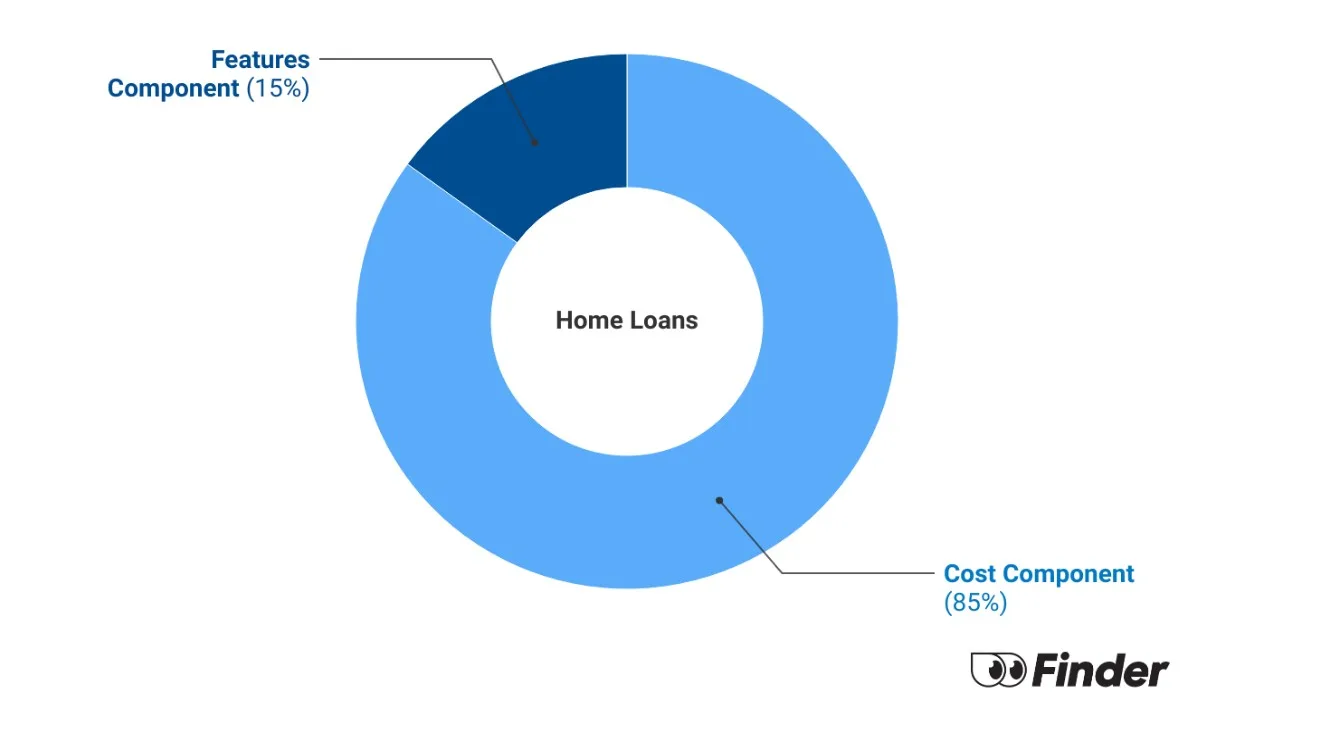Key takeaways
- A redraw allows you to put extra money in your home loan so you pay less interest, but you can pull it out to spend – just like money in a bank account.
- Access to redraw money can be limited and depends on your loan and the lender's rules.
- Redraw is different to an offset account and doesn't give you the same level of control over your cash.
What does redraw facility mean?
Many variable rate home loans let you make extra repayments on top of your required monthly repayment amount. If the home loan also has a redraw facility, then the loan allows you to withdraw (or redraw) some of the extra repayments you've made and spend them as you wish.
As long as you make extra repayments, you can use this money in your home loan like it's money in a savings account. Some lenders give you easy access to this money via a card or app, but there may be limits to how much you can access; minimum redraw amounts; and/or there may be redraw fees.
A redraw facility makes your home loan more flexible and useful, because you can save and spend with it, as any extra repayments on your loan also lower how much interest you pay.
Redraw is more common on variable home loans and less common on fixed rate loans. Not every loan allows you to make extra repayments in the first place, let alone redraw them.
Want a loan with redraw right now?
Does redraw reduce monthly repayments?

"A redraw is where the spare cash is held in your loan account, rather than your transaction account. You generally need to transfer the money you want to spend to a linked account to access it, which is not a big deal, but can be an added safety barrier to [help you avoid] spending your money willy nilly. Some lenders may lower your monthly repayment depending on your redraw availability – lenders such as NAB and Suncorp, for example, may calculate your repayment based on the outstanding debit balance of your loan – rather than the monthly repayment in your loan schedule. This can be good for cash flow."
The benefits of home loan redraw

1. Extra repayments means less interest – so you own your home sooner
Let's say you have a $600,000 loan amount over 30 years and your interest rate is 6.00%. Your monthly principal and interest repayments would be around $3,600 a month.
But if you paid an extra $100 a month from the start of the loan term you'd repay the loan in 28 years and 1 month rather than 30 years and you'd save $12,387 in interest.
2. Spend the money when you need it
Redraw allows you to make extra repayments and therefore pay less interest, while also giving you the option to spend this money if you need it. Now of course, if you spend your extra repayments you lose the full benefit of paying less interest.
But even if you save up the extra repayments for a few years and then redraw some of it, you still pay less interest overall and own your home sooner.
What are the disadvantages of a redraw facility?
One downside to home loan redraw is that extra repayments aren't your money. Once paid, the money belongs to your lender. A redraw facility means that your lender allows you to take the money back out.
This is a disadvantage because lenders have different rules about redraw. A lender may stipulate a minimum or maximum redraw amount per month. This gives you less control over the money. Lenders may also charge fees or require you to redraw online only (some lenders, especially online lenders, don't have bank branches).
And your lender can restrict your redraw access in any way they want. A few years ago, the Commonwealth Bank made headlines when it announced that it was going to slowly reduce the amount of extra repayments a borrower can access over time to ensure that the loan is repaid. In effect, this meant that a borrower couldn't access 100% of their extra repayments.
ME Bank announced something similar, but abandoned the plan due to customer outrage.
Is it better to have money in redraw or offset?
A 100% offset account is a similar mortgage feature to a redraw. You put money in the offset account and it reduces your interest charges exactly like extra repayments. And you can spend the money in your account any way you like. This is similar to redraw.
But an offset account is better than a redraw facility. The money in an offset account is your money. Your lender can't restrict your access to it and they can't gradually reduce the amount of it you can access (although the lender can charge a fee for the account). You enjoy all the protections and accessibility of a bank account.
Money in an offset account is usually guaranteed by the federal government's deposit guarantee in the event the lender goes bankrupt, which is $250,000.
Learn more about redraw versus offsets
How do I access money from my redraw?
Every lender lets you access extra repayments differently, but usually, it's as simple as transferring it out of your home loan account and into a transaction account.
Do fixed rate home loans come with redraw?
Fixed rate loans are less likely to allow borrowers to make extra repayments and redraw them. But it is possible to find fixed rate loans that do. Many fixed rate loans may allow you to make extra repayments up to a certain limit, such as $10,000, during the fixed period of the loan. If the loan also has redraw you could therefore save and later redraw no more than $10,000.
Finder survey: How many Australians say making extra repayments is important to them when choosing a home loan?
| Response | |
|---|---|
| Extra repayment | 32.1% |
Get a home loan with free redraw
The loans in the table below all offer redraw without a fee, but some may specifiy a minimum redraw amount.
Compare other products
We currently don't have that product, but here are others to consider:
How we picked theseWhat is Finder Score?
The Finder Score crunches 7,000 home loans across 120+ lenders. It takes into account the product's interest rate, fees and features, as well as the type of loan eg investor, variable, fixed rate - this gives you a simple score out of 10.
To provide a Score, we compare like-for-like loans. So if you're comparing the best home loans for cashback, you can see how each home loan stacks up against other home loans with the same borrower type, rate type and repayment type. We also take into consideration the amount of cashback offered when calculating the Score so you can tell if it's really worth it.
Sources
Ask a question
More guides on Finder
-
Calculate the income needed to buy a home in any suburb in Australia
Work out how much you need to earn to buy a house in any Australian suburb.
-
Current home loan interest rates in Australia
We compile the average home loan interest rates in the market and update them monthly.
-
Compare bank interest rates in December 2025
Compare current bank interest rates for home loans, credit cards, personal loans, savings accounts and term deposits to find the best deal for you.
-
Low deposit home loans
You may be able to get a low deposit home loan with just a 5% cash deposit. Here are the lenders who are more likely to lend you a 95% loan.
-
Investment home loan rates
The best investor home loan rates that have been offered in years have hit the market. Compare investment property loan rates today.
-
Compare construction loan rates
Construction loan comparison is as simple as finding out how much you can borrow, then reviewing some of the best construction loans on the market to find the right fit.
-
Cheap Home Loans Australia
Find the cheapest home loan rates and learn how to decide which one best fits your needs and will save you the most money.
-
Best variable home loan rates
Find a great deal on a variable interest rate home loan from lenders large and small. Start comparing and saving today.
-
Best Home Loan Rates Australia
Learn how to compare rates to find the best home loan and start saving money on your mortgage today.
-
Best home loans with offset accounts
What is an offset account? It can save you thousands in interest and help you own your home sooner.

